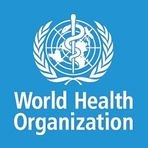Lahore's Air Crisis: A City Choking on Smog
November 4, 2024, 3:32 am

Location: Switzerland, Geneva, Chambésy
Employees: 5001-10000
Founded date: 1948

Location: China, Hong Kong, Hong Kong Island
Employees: 1001-5000
Founded date: 1835
Lahore, a bustling megacity of 14 million, is gasping for breath. The air pollution levels have reached unprecedented heights, creating a smog crisis that has gripped the city. This is not just a seasonal nuisance; it’s a public health emergency. The air quality index soared above 1,000, a staggering figure that dwarfs the 300 threshold deemed dangerous. This is a city where the air feels thick, heavy, and toxic.
For days, Lahore has been shrouded in a dense blanket of smog. The culprit? A toxic cocktail of low-grade diesel fumes, smoke from agricultural burning, and the cold winter air that traps pollutants close to the ground. It’s a recipe for disaster. Residents are left to navigate this murky haze, where visibility is low and health risks are high.
The situation has prompted drastic measures. Authorities have closed primary schools for a week to protect children from the hazardous air. Children are particularly vulnerable. Their lungs are still developing, and they breathe more rapidly than adults, inhaling more pollutants relative to their size. Keeping them indoors is a necessary evil, but it highlights a grim reality: the air is simply too dangerous to breathe.
The health implications are dire. The World Health Organization warns that prolonged exposure to such toxic air can lead to strokes, heart disease, lung cancer, and respiratory illnesses. The air in Lahore is not just bad; it’s lethal. Studies indicate that pollution levels here can shorten life expectancy by an average of 7.5 years. For many, this is not just a statistic; it’s a daily reality.
As the smog settles in, the city’s residents are left feeling helpless. One painter, who goes by a single name, Rehmat, expressed his frustration. He wears a mask while working, but he knows it’s a temporary solution. The government’s inability to tackle this crisis leaves him feeling trapped. What can a poor painter do when the air itself is a threat?
The government has implemented new restrictions in pollution hotspots. Tuk-tuks with polluting two-stroke engines are banned, and restaurants that barbecue without filters face closure. These measures are a step in the right direction, but they feel like band-aids on a gaping wound. The root causes of pollution remain unaddressed.
School hours have been adjusted to minimize exposure during peak pollution times. Outdoor activities for children have been suspended until January. These decisions reflect a growing awareness of the crisis, but they also underscore the urgency of the situation. The air quality is not just a seasonal issue; it’s a chronic problem that demands long-term solutions.
Cyclists in Lahore have taken to the streets, raising awareness about the smog crisis. Their efforts are commendable, but they also highlight a troubling truth: the burden of change often falls on the shoulders of citizens. The government must take decisive action to combat this crisis. Awareness campaigns are important, but they must be paired with tangible policies that address the sources of pollution.
The air quality crisis in Lahore is not an isolated issue. It reflects a broader environmental challenge facing many cities in South Asia. Nearly 600 million children in the region are exposed to high levels of air pollution. This is a ticking time bomb. The health of an entire generation is at stake.
As the smog continues to envelop Lahore, the city’s residents are left in a state of uncertainty. Will the government take meaningful action? Will the air ever clear? These questions linger in the minds of many. The smog is not just a seasonal inconvenience; it’s a wake-up call. The time for action is now.
In the face of this crisis, community resilience shines through. Residents are banding together, advocating for cleaner air and healthier living conditions. They are demanding accountability from their leaders. This grassroots movement is crucial. Change often starts at the local level, and the people of Lahore are ready to fight for their right to breathe clean air.
The road ahead is fraught with challenges. The government must prioritize environmental policies that address the root causes of pollution. Investment in clean energy, stricter emissions regulations, and public transportation improvements are essential. The time for half-measures has passed. Lahore deserves a future where the air is clean and the sky is blue.
In conclusion, Lahore’s air crisis is a stark reminder of the urgent need for action. The city is at a crossroads. The choices made today will shape the health and well-being of future generations. The smog may be thick, but the resolve of the people is thicker. Together, they can clear the air and reclaim their city. The fight for clean air is not just a battle for health; it’s a battle for life itself.
For days, Lahore has been shrouded in a dense blanket of smog. The culprit? A toxic cocktail of low-grade diesel fumes, smoke from agricultural burning, and the cold winter air that traps pollutants close to the ground. It’s a recipe for disaster. Residents are left to navigate this murky haze, where visibility is low and health risks are high.
The situation has prompted drastic measures. Authorities have closed primary schools for a week to protect children from the hazardous air. Children are particularly vulnerable. Their lungs are still developing, and they breathe more rapidly than adults, inhaling more pollutants relative to their size. Keeping them indoors is a necessary evil, but it highlights a grim reality: the air is simply too dangerous to breathe.
The health implications are dire. The World Health Organization warns that prolonged exposure to such toxic air can lead to strokes, heart disease, lung cancer, and respiratory illnesses. The air in Lahore is not just bad; it’s lethal. Studies indicate that pollution levels here can shorten life expectancy by an average of 7.5 years. For many, this is not just a statistic; it’s a daily reality.
As the smog settles in, the city’s residents are left feeling helpless. One painter, who goes by a single name, Rehmat, expressed his frustration. He wears a mask while working, but he knows it’s a temporary solution. The government’s inability to tackle this crisis leaves him feeling trapped. What can a poor painter do when the air itself is a threat?
The government has implemented new restrictions in pollution hotspots. Tuk-tuks with polluting two-stroke engines are banned, and restaurants that barbecue without filters face closure. These measures are a step in the right direction, but they feel like band-aids on a gaping wound. The root causes of pollution remain unaddressed.
School hours have been adjusted to minimize exposure during peak pollution times. Outdoor activities for children have been suspended until January. These decisions reflect a growing awareness of the crisis, but they also underscore the urgency of the situation. The air quality is not just a seasonal issue; it’s a chronic problem that demands long-term solutions.
Cyclists in Lahore have taken to the streets, raising awareness about the smog crisis. Their efforts are commendable, but they also highlight a troubling truth: the burden of change often falls on the shoulders of citizens. The government must take decisive action to combat this crisis. Awareness campaigns are important, but they must be paired with tangible policies that address the sources of pollution.
The air quality crisis in Lahore is not an isolated issue. It reflects a broader environmental challenge facing many cities in South Asia. Nearly 600 million children in the region are exposed to high levels of air pollution. This is a ticking time bomb. The health of an entire generation is at stake.
As the smog continues to envelop Lahore, the city’s residents are left in a state of uncertainty. Will the government take meaningful action? Will the air ever clear? These questions linger in the minds of many. The smog is not just a seasonal inconvenience; it’s a wake-up call. The time for action is now.
In the face of this crisis, community resilience shines through. Residents are banding together, advocating for cleaner air and healthier living conditions. They are demanding accountability from their leaders. This grassroots movement is crucial. Change often starts at the local level, and the people of Lahore are ready to fight for their right to breathe clean air.
The road ahead is fraught with challenges. The government must prioritize environmental policies that address the root causes of pollution. Investment in clean energy, stricter emissions regulations, and public transportation improvements are essential. The time for half-measures has passed. Lahore deserves a future where the air is clean and the sky is blue.
In conclusion, Lahore’s air crisis is a stark reminder of the urgent need for action. The city is at a crossroads. The choices made today will shape the health and well-being of future generations. The smog may be thick, but the resolve of the people is thicker. Together, they can clear the air and reclaim their city. The fight for clean air is not just a battle for health; it’s a battle for life itself.